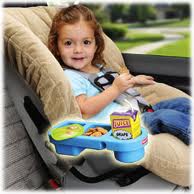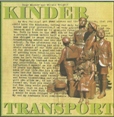| |
|
 During
the last few weeks, we've seen many of the traditional cartoons which represent
the passing year as an old Father Time, and the coming one as a toddler New
Year. In cartoons which are animated, the toddler walks off leaving the old man
behind. They aren't ever seen going forward together and I'd like to change
that. How? By putting them in the same automobile, so the experiences of the
past can make the road safer for the future. During
the last few weeks, we've seen many of the traditional cartoons which represent
the passing year as an old Father Time, and the coming one as a toddler New
Year. In cartoons which are animated, the toddler walks off leaving the old man
behind. They aren't ever seen going forward together and I'd like to change
that. How? By putting them in the same automobile, so the experiences of the
past can make the road safer for the future.
Time, or rather a lack of it, has become a status symbol of sorts for many
people. Conversations often center on a sort of one-upsmanship where each
participant tries to outdo the other as to how very "crazy" their life has
become. I put "crazy" in quotes not only because it is the term of choice for
those who play that game, but because the actions of those who pride themselves
on a lack of time are often crazy indeed.
Most family oriented publications try to help with this problem of
over-scheduling by presenting articles about how to squeeze more activities into
the same span. These pieces often are about time spent in the car, suggesting
ways to placate children who are restless when restrained in the back seat of a
vehicle.
Alas, some of the most popular suggestions have to do with food to be provided
for trips, whether short hops or longer journeys. These foods are intended to be
consumed whilst the car is in motion, the idea being that time is too precious
to be spent sitting in one place during a meal or snack session. The authors
usually suggest that certain foodstuffs will be healthy for youngsters under
these circumstances, and that idea is truly "crazy."

The experience of the past teaches us that a person who is choking is unable to
make any sound to signal the problem. A child who is in a restraint seat cannot
even reach the driver. The operator of a vehicle must keep their eyes on the
road, thus cannot have a constant view of a passenger in the back seat. We also
know from experience that it takes time for a driver to pull to the curb and
stop a car, time which might mean the difference between life and death for a
child whose healthy snack has gone down the wrong way in a tiny windpipe.
Despite this knowledge adults allow children to eat in moving vehicles, and
often encourage it as a way to save time.
The past also teaches us that time for self-recrimination is endless to the
parent of a child who is dead or brain-damaged from oxygen deprivation. Let the
lessons Father Time has learned make the road ahead one which leads to a future
for children of the new year. If life is too "crazy" to allow one to stop and
enjoy a meal, learn to reschedule, or you may be "crazy" with grief and guilt.
Don't eat and drive.
AUTHOR'S NOTE:
The problem of children choking because of eating food
while riding in a car is a serious one. Children's throats are very much
smaller, and less elastic than those of adults and they can choke on a snack
causing irreparable brain-damaged and death if they are not immediately helped.
Youngsters who carry food around parks and playgrounds tend not to chew their
food, gulping it down while running or playing on the swings. The health
department sites of many states include information on child-choking hazards,
but parents often let kids eat things from drive-through windows while they are
being transported from place to place.
What finally drove me to write this piece was seeing an article in a prominent
family magazine about "Grab and Go" muffin recipes, the point being that
children could eat them in the car on the way to school. Those little ones could
be dead before class.
Of course, eating in motion is dangerous for anyone, but by the time I was done
researching all the articles about food for the road, I was horrified. Not one
of them included a caution about safety. I'm hoping readers will forward my
piece to all the parents they know, as well as to camps and schools who may
provide or allow snacks on the bus.
Copyright 2011 Eddy Robey |
|
|




 Bottom
Bottom





 During
the last few weeks, we've seen many of the traditional cartoons which represent
the passing year as an old Father Time, and the coming one as a toddler New
Year. In cartoons which are animated, the toddler walks off leaving the old man
behind. They aren't ever seen going forward together and I'd like to change
that. How? By putting them in the same automobile, so the experiences of the
past can make the road safer for the future.
During
the last few weeks, we've seen many of the traditional cartoons which represent
the passing year as an old Father Time, and the coming one as a toddler New
Year. In cartoons which are animated, the toddler walks off leaving the old man
behind. They aren't ever seen going forward together and I'd like to change
that. How? By putting them in the same automobile, so the experiences of the
past can make the road safer for the future.








 Printer
friendly page
Printer
friendly page